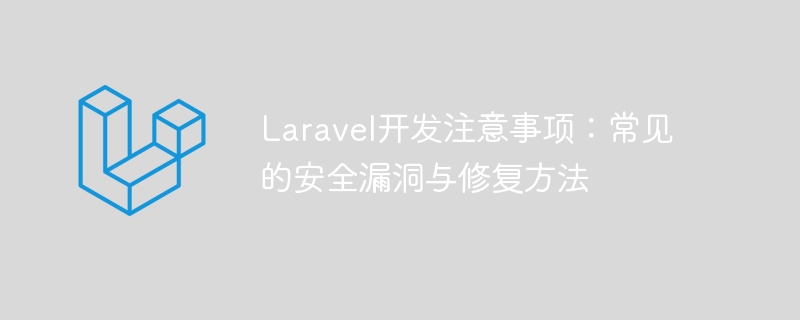

Laravel Development Notes: Common Security Vulnerabilities and Repair Methods
With the rapid development of Internet technology, the development of web applications has become more and more common. Laravel, as a popular PHP framework, is widely used in the development of web applications. However, security issues are always an important aspect that developers need to pay attention to during the development process. This article will introduce some common Laravel security vulnerabilities and provide corresponding fixes.
htmlspecialchars function. This ensures that any user input is not executed as a script. realpath function provided by Laravel to obtain the real file path. At the same time, the path parameters entered by the user should not be trusted and should be verified and filtered. @csrf directive to the form to enable protection. While processing the request in the background, Laravel verifies that the correct CSRF token is included in the request. Auth middleware provided by Laravel to ensure that only authenticated users can access specific routes or functions. In addition, user roles and permissions should be reasonably divided and managed to prevent unauthorized users from accessing sensitive information. store method provided by Laravel to save the uploaded file in a safe location. Additionally, the size and number of files should be limited to prevent attackers from exhausting server resources. Through the above points, you can increase the security of your application in Laravel development. However, developers still need to be vigilant and follow Laravel's security updates and best practices in a timely manner. Only by comprehensively considering security issues can users' privacy and application integrity be protected.
The above is the detailed content of Laravel Development Notes: Common Security Vulnerabilities and Fixing Methods. For more information, please follow other related articles on the PHP Chinese website!




